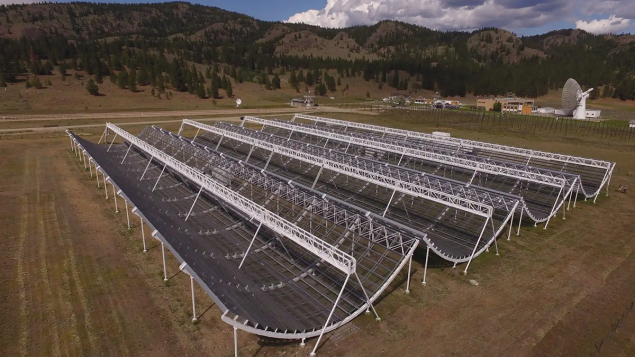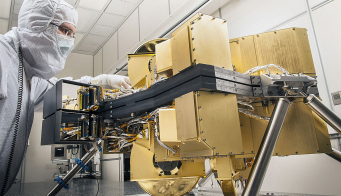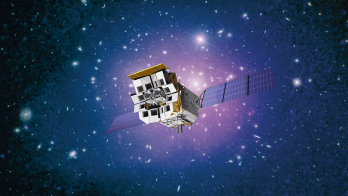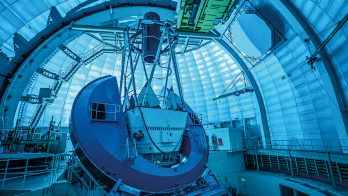
Fast radio bursts (FRBs) are short but powerful bursts of radio waves that are believed to be emitted by dense astrophysical objects such as neutron stars or black holes. They were discovered by Duncan Lorimer and his student David Narkevic in 2007 while studying archival data from the Parkes radio telescope in Australia. Since then, more than a thousand FRBs have been detected, located both within and without the Milky Way. These bursts usually last only a few milliseconds but can release enormous amounts of energy – an FRB detected in 2022 gave off more energy in a millisecond than the Sun does in 30 years – however, the exact mechanism underlying their creation remains a mystery.
Inhomogeneities caused by the presence of gas and dust in the interstellar medium scatter the radio waves coming from an FRB. This creates a stochastic interference pattern on the signal, called scintillation – a phenomenon akin to the twinkling of stars. In a recent study, astronomer Kenzie Nimmo and her colleagues used scintillation data from FRB 20221022A to constrain the size of its emission region. FRB 20221022A is a 2.5 millisecond burst from a galaxy about 200 million light-years away. It was detected on 22 October 2022 by the Canadian Hydrogen Intensity Mapping Experiment Fast Radio Burst project (CHIME/FRB).
The CHIME telescope is currently the world’s leading FRB detector, discovering an average of three new FRBs every day. It consists of four stationary 20 m-wide and 100 m-long semi-cylindrical paraboloidal reflectors with a focal length of 5 m (see “Right on CHIME” figure). 256 dual-polarisation feeds suspended along each axis gives it a field of view of more than 200 square degrees. With a wide bandwidth, high sensitivity and a high-performance correlator to pinpoint where in the sky signals are coming from, CHIME is an excellent instrument for the detection of FRBs. The antenna receives radio waves in the frequency range of 400 to 800 MHz.
Two main classes of models compete to explain the emission mechanisms of FRBs. Near-field models hypothesise that emission occurs in close proximity to the turbulent magnetosphere of a central engine, while far-away models hypothesise that emission occurs in relativistic shocks that propagate out to large radial distances. Nimmo and her team measured two distinct scintillation scales in the frequency spectrum of FRB 20221022A: one originating from its host galaxy or local environment, and another from a scattering site within the Milky Way. By using these scattering sites as astrophysical lenses, they were able to constrain the size of the FRB’s emission region to better than 30,000 km. This emission size contradicted expectations from far-away models. It is more consistent with an emission process occurring within or just beyond the magnetosphere of a central compact object – the first clear evidence for the near-field class of models.
Additionally, FRB 20221022A’s detection paper notes a striking change in the burst’s polarisation angle – an “S-shaped” swing covering about 130° – over a mere 2.5 milliseconds. They interpret this as the emission beam physically sweeping across our line of sight, much like a lighthouse beam passing by an observer, and conclude that it hints at a magnetospheric origin of the emission, as highly magnetised regions can twist or shape how radio waves are emitted. The scintillation studies by Nimmo et al. independently support this conclusion, narrowing the possible sources and mechanisms that power FRBs. Moreover, they highlight the potential of the scintillation technique to explore the emission mechanisms in FRBs and understand their environments.
The field of FRB physics looks set to grow by leaps and bounds. CHIME can already identify host galaxies for FRBs, but an “outrigger” programme using similar detectors geographically displaced from the main telescope at the Dominion Radio Astrophysical Observatory near Penticton, British Columbia, aims to strengthen its localisation capabilities to a precision of tens of milliarcsecond. CHIME recently finished deploying its third outrigger telescope in northern California.
Further reading
K Nimmo et al. 2025 Nature 637 48.
R Mckinven et al. Nature 637 43.








